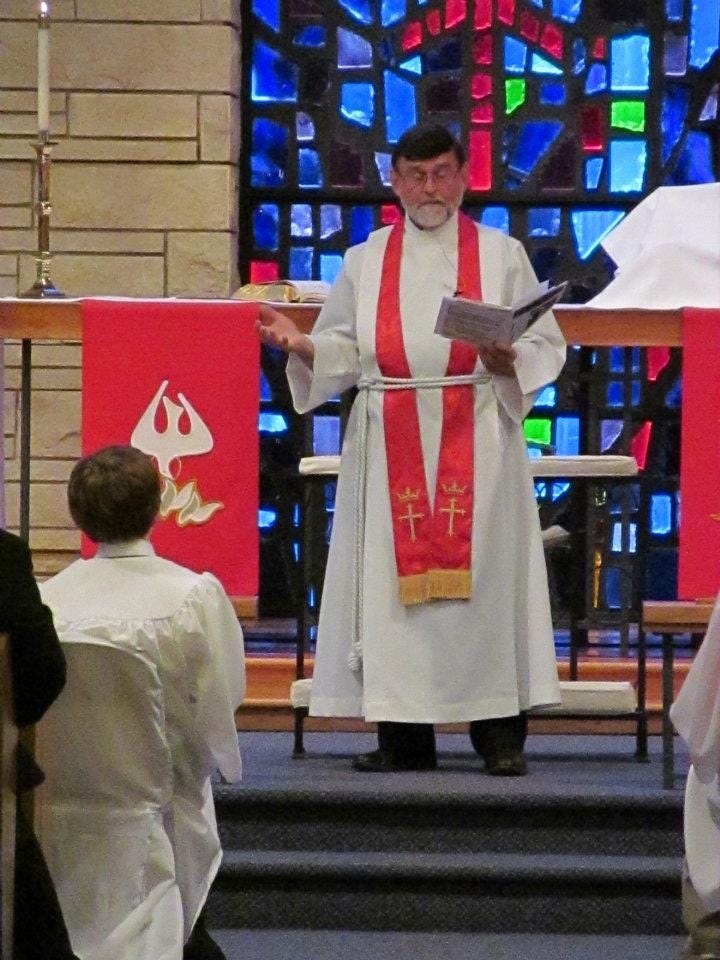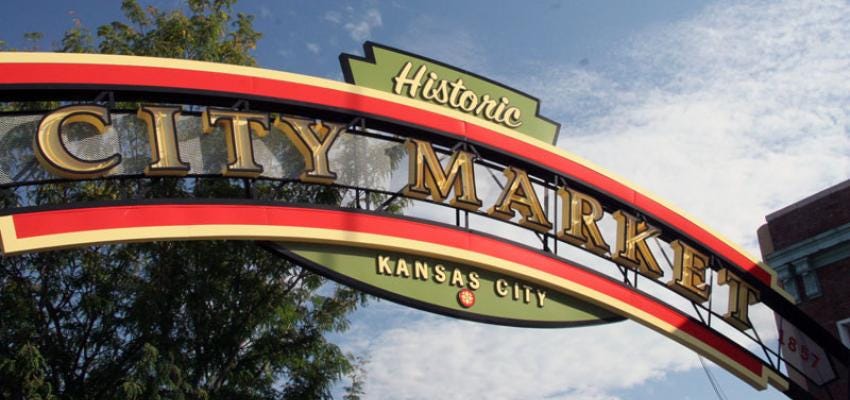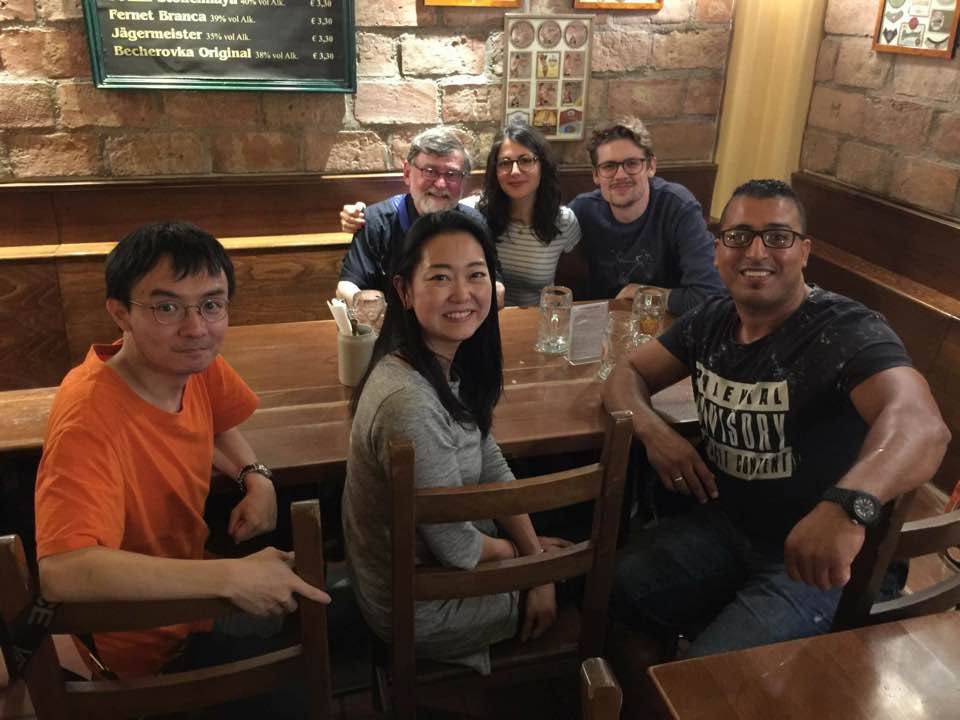Mary Ann died.
I left the country eight months later and traveled from place to place for eight weeks. Later that year, I left the country again, for a month. The next year I left again for two months. I kept that annual travel schedule for the following ten years.
Covid arrived. I had just moved to downtown Kansas City from a twenty-two year home base in Topeka, Kansas.
After four idyllic years in my City Market apartment, things in my environment changed. It was time. I sold everything, terminated the lease on my apartment, and I now live outside the country, moving from place to place for about ten months out of the year, visiting family in the USA twice a year for about a month each time, once from Thanksgiving to Christmas and once in the spring.
In this interview, I describe what I did after Mary Ann died, but why did I do it? Why did I choose to leave the country and go so far away?
One of the primary reasons is that I needed to do something so dramatic, so attention-getting that it would be big enough to capture my attention, to provide an alternative to brooding over her death.
I needed to change direction from looking back to looking forward.
I couldn’t change what had happened, but I had to grieve losing her physical presence in my life. The grief was huge and overpowering. I was afraid I would not be able to survive without her. Intuitively, but without a full conceptual understanding, I knew I needed to choose things to do that scared me enough to match, if not outweigh, at least for the immediate future, the fear of living without her. To put it bluntly, I had to choose whether to live or not. I was scared every time I went to a riding lesson or a swimming lesson or an hour on the treadmill and lifting heavier and heavier weights at the insistence of my personal trainer.
The alarm startled me and angered me when it broke open the day at 6:30am demanding that no matter the weather or the darkness I pull on my clothes and hiking boots, grab my backpack, get in the car, and drive to the Cedar Crest hiking path. Those palpable fears allowed less room for the overpowering pain of loss. Logistically, I knew that the time I spent with those lesser fears would give the big fear of a purposeless life without her (and the monstrous grief-pain) time to lose some of its intensity and eventually find a bearable spot in my body/mind/spirit to live.
I didn’t realize fully at first just how wise the choices I made after she died were. A member of the Spiritual Formation group I have been attending for over twenty years made a comment a couple of weeks ago that confirmed the wisdom of the choice to hike two of the Great Walks on the South Island of New Zealand.
Gwen is a very gifted artist and art therapist who works at a nurturing and tranquil hospice house. She led two groups I attended for a time right after Mary Ann’s death. Sharon, sitting next to her, had recently lost her husband. The conversation that day led Sharon to ask Gwen to share what she had suggested Sharon do when the grief became overwhelming. Gwen simply said, keep walking, stay hydrated, and sleep. I had chosen to walk. I climbed over rocks, up and down mountains on the Milford Track and the Kepler Track in Fiordland on the west side of the South Island.
Since then, I have also read about the power of intense experiences to make new connections in the brain. I have inferred that the fear, verging on terror, that I experienced hiking in dangerous weather, galloping out of control on horseback in the jagged rocks of the Snowy Mountains, and sliding off the back of a boat into large gray swells after only a few swimming lessons and no prior experience snorkeling, all had a role in breaking the power of my grief to steal my will to live.
When I chose to take on those challenges, a bravado emerged from having nothing to lose more than some form of courage.
I didn’t know how terrified I would be. It is a good thing, because the fear became an elixir. The victory I felt after each intense experience was exhilarating, energizing, life affirming, healing.
I am less able to answer the question, why did I decide to travel after Mary Ann died, than I am to describe the wisdom of doing so from the perspective of hindsight: what I know now about the wisdom of doing so.
At that time, the travel worked. I did not run away from my grief, but rather I ran into healing, new life.
Why am I still traveling? Am I running away? I can testify that whatever personal problems and struggles I have do not stay behind when I board a plane. No matter where I am, they come right along with me. I still would like to lose some weight, exercise more, procrastinate less, eat more healthfully, and get better at speaking German. They come along with me. Signs of aging, processing things more slowly mentally, moving physically more slowly with annoying twinges of osteoarthritis when getting up and down all come along. Time does not stop just because I am somewhere else on the planet. Thoughts about whether I measure up or not don’t travel in my backpack but in the conversations between my self-talk and viscera. Those conversations will not be silenced simply by changing locations.
The travels provide distractions that pause the self-talk and fill with space with moments of profound beauty, breathtaking vistas, logistical challenges, beautiful relationships, and the thrill of discovery: new people, new challenges. I cannot switch on autopilot and just let life drift by. I have to pay attention. I have chosen a particular path for my journey, neither better nor worse than anyone else’s journey.
In one way or another, we are all Planetary Pilgrims.
— Peter








I love your writings! Running forward toward healing instead of staying stuck day after day. Overcoming fears & connecting with people- what an inspiration.
Your words not running away from grief but running toward healing are profound. And love how you write around presence and acceptance. Keep writing and sharing 🥰